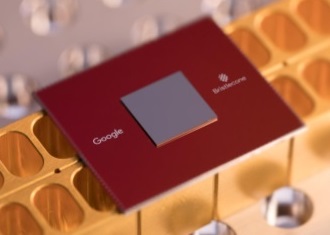Google Builds Cryogenic Chip to Scale-Up Its Quantum Computers
Quantum computing researchers working for Google have reportedly built a CMOS integrated circuit (IC) that will work at cryogenic temperatures. The chip is intended to replace the 168 coaxial cables that are currently needed to power-up the company’s 72-qubit quantum computer.
From Cables to Chips
As the number of qubits for quantum computers increases, the number of circuits connecting those qubits with one another also has to increase. There are only 72-qubits in Google’s most powerful quantum computer so far, and it already needs more than twice as many cables.
Google believes that the quantum computers that will solve some of the world’s largest problems in the future will need millions of qubits. Suffice to say that it wouldn’t be practical for quantum computers to keep increasing the number of cables they use to connect all of those qubits.
In order to make quantum computers scale up more easily, all of the components will have to work at cryogenic temperatures and that includes the circuits between the qubits. In the first phase of transitioning from cables to a quantum computer that works entirely on a chip, Google’s team was able to design a high-performance, low-power pulse modulator as an IC to program the qubits at cryogenic temperatures.
Controlling Heat Dissipation
Joseph Bardin, a University of Massachusetts at Amherst associate professor of electrical and computer engineering, who has helped design the cryogenic IC, said that the biggest challenge with trying to move from cables to an IC is the heat dissipation.
Although the qubits operate at a temperature of 10 milikelvin, the control circuits are were operating in the range of four K. However, a CMOS transistors generally operate at a temperature that is 200 degrees higher and start to behave differently when operated at such low temperature.
The other issue was that even four K was too high of a temperature compared to the milikelvin temperature range required for quantum computer circuitry. Therefore, Bardin and Google’s team had to ultimately come up with an IC design that used only 2mW in testing.
Get Tom's Hardware's best news and in-depth reviews, straight to your inbox.
Bardin also said that there are two other components of a quantum computer that need to be cryogenically integrated to help quantum computers scale up to millions of qubits -- the readout system, as well as another component that controls a different aspect of the pulse modulator.
Intel and IBM, two other major companies that are developing quantum computers, are also said to be working towards the same goal of putting quantum computers on a chip.
Lucian Armasu is a Contributing Writer for Tom's Hardware US. He covers software news and the issues surrounding privacy and security.
